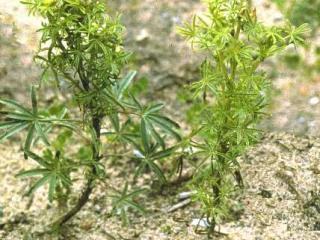Cucumber mosaic virus (CMV)
Cucumber mosaic virus (CMV) is a seed and aphid-borne virus that infects lupins. Historically, high rainfall zones have had highest disease risk. Infected seed is the most important source of CMV for lupin crops. Plants grown from infected seed act as primary infection sources for aphids to acquire the virus and spread it to healthy plants within the crop.
Symptoms
Plants grown from infected seed are stunted with pale, bunched, down-curled, faintly mottled leaves. Plants infected by aphids during the season exhibit similar symptoms on plant parts that emerge following infection, older leaves present before infection remain healthy. Pod set and seed size are both reduced in infected plants.
Management
- Sowing healthy uninfected seed is the most effective way to reduce CMV occurrence in a crop.
- Virus spread can be reduced by promoting early canopy development with narrow row spacing and high seeding rates to shade out infected seedlings; and by sowing into retained stubble and minimising bare ground exposure to deter aphid landings.
- Varieties differ in their rate of seed transmission of this disease. Varieties with low seed transmission rates are recommended for high rainfall environments. Albus lupins are not hosts of CMV.

